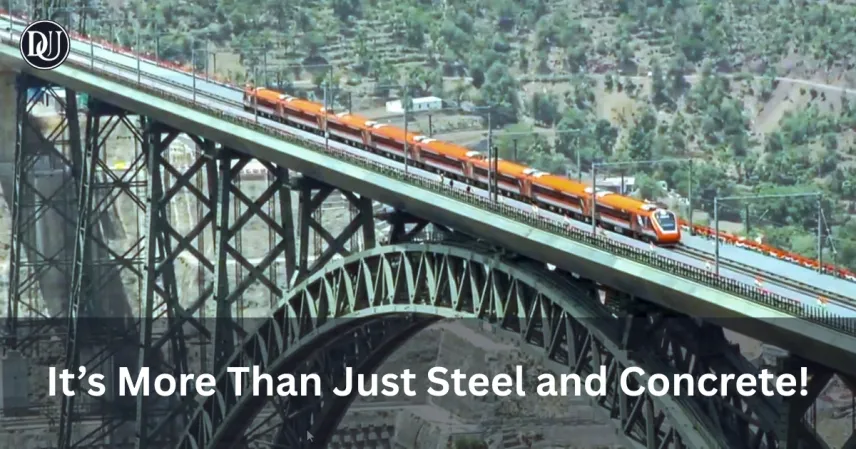I was just reading something that gave me serious chills – the good kind. You know how sometimes you hear about these massive engineering projects, and they seem almost impossible? Well, the new rail link connecting the Kashmir Valley is one of those. And here's what really caught my attention: the engineers and workers literally said, “For 12 years, we ate, lived, breathed the Chenab.” Seriously, think about that dedication! It’s not just about tracks and tunnels; it’s about the sheer human will to conquer incredible challenges. Makes you wonder, right? What kind of grit does that even take?
![]()
Here's What Was Really Happening in Those Mountains
Let's be honest, connecting the remote and challenging terrain of the Kashmir Valley by rail isn't just a big project; it’s monumental. We’re talking about navigating treacherous mountains, deep gorges, and unpredictable geological conditions. The Chenab River, in particular, presented a formidable obstacle. Imagine trying to build a bridge taller than the Eiffel Tower across a river flowing through a deep valley, all while dealing with seismic activity and extreme weather. It’s like something out of a futuristic movie, but it's real life, and it took real human ingenuity and sacrifice.
- The Chenab Bridge: This isn't just any bridge; it's the world's highest railway bridge, soaring hundreds of meters above the Chenab River. Building something like that requires mind-boggling precision and courage.
- Tunnels Galore: Beyond the bridges, a significant portion of this rail link involves cutting through mountains, creating long and complex tunnels. These aren't just holes in the ground; they’re carefully designed and reinforced passages, drilled through solid rock.
- Years of Dedication: That quote, \"For 12 years, we ate, lived, breathed the Chenab,\" isn't just poetic. It truly captures the immense time, effort, and personal commitment from thousands of engineers, laborers, and support staff who essentially made the project their entire lives for over a decade.
![]()
Now, I know what you’re thinking: what about the dangers? Bear with me here. Working in such extreme conditions, high up in the mountains, with heavy machinery and explosives, it’s incredibly risky. Every day was a challenge, a testament to their bravery and skill. This got me thinking, these aren't just construction workers; they're pioneers, opening up a new lifeline for an entire region. Trust me on this, this project is far more than just infrastructure.
What This Actually Means for the Kashmir Valley and Beyond
This rail link to the Kashmir Valley isn’t just about connecting two points on a map; it's a game-changer for the region. What does this mean for us, and especially for the people living in the Valley? For starters, it means much better connectivity. Imagine reliable transportation that isn't affected by extreme weather, which often shuts down mountain roads. This will make it easier for people to travel, for goods to be transported, and for tourism to flourish.
It also symbolizes hope and integration. For years, the Valley has felt isolated due to its challenging geography. This rail link effectively brings it closer to the rest of the country, potentially boosting economic opportunities, improving access to essential services, and fostering a greater sense of unity. It's a massive step towards progress, and frankly, it's a testament to what's possible when human beings set their minds to overcoming seemingly insurmountable obstacles.
![]()
Bottom Line: A Triumph of Human Endeavor and Connectivity!
The completion of the rail link to the Kashmir Valley, especially the incredible Chenab Bridge, is a monumental feat of engineering and human perseverance. It’s a powerful story of how thousands of dedicated individuals literally poured their lives into connecting a challenging region, promising to transform lives and unlock new possibilities. It's truly inspiring, isn't it? What's the biggest engineering marvel you've ever witnessed, and what do you think it represents?










